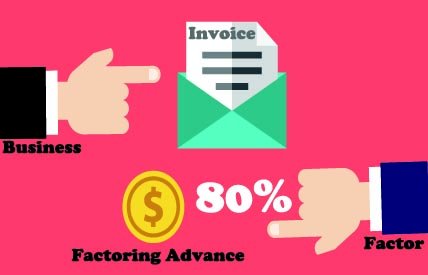Factoring Advances What Cash Advance Rate Can Your Business Get?
What is a Factoring Advance?
The factoring advance is the percentage of the invoice value that a factor will pay you at the time of the sale of the receivables. This is not the final amount your company will be paid for the purchase of the invoices; you will get the balance minus the factoring fees at the time the payments are collected from your customers.

Example: Suppose you sell invoices for $100, and your pre-agreed advance rate is 80%. Your factoring advance, then, would be $80.

How Much Your Advance Would Be?
Here is a calculator for you to input your numbers and see how the advance rate works.
How are Factoring Advance Rates Defined?

Before making you a proposal regarding invoice factoring advance rates, the commercial factoring company will analyze different parameters that influence your business and industry risk.
The following items are usually taken into consideration:
Your Industry

Generally, industries that supply products receive lower advances than those that provide services.
There are fewer opportunities for a dispute to arise in the case of the provision of services; for example, once delivered to a client, a service cannot be returned or found to be defective.
Your Business Identified or Potential Dilution

Your dilution rate is the percentage that your dilution represents over the gross value of your invoices. The calculation would be the following: Dilution Rate = Dilution Amount/ Gross Invoice Value = $1000/$10000 = 10% The higher your dilution rate, the lower your advance rate will likely be offered.
When defining your factoring advance rate, a factoring company will analyze your business dilution rate, which takes into account the offsets that can affect the payment of your receivables. Dilution is the difference between the gross value of your invoices and the payment collected from your customers. This difference can be represented by factors such as returned goods, bad debt write-offs, discounts offered, etc.
Dilution Example: Let’s say that during the last year, your company billed your customers $10,000 for the sale of products but collected $9,000. You received returns of goods for $500, offered discounts for prompt payment for $300, and could not collect $200 due to customer insolvency. This $1000 difference between your invoices and final collections is your company dilution.
Customer Creditworthiness
The credit background of your company’s customer base, size, and reputation also affects the invoice factoring advance rate that factoring companies will be willing to provide you.

Generally, you will likely get a higher factoring advance rate if most of your customers are big companies with a strong credit history than if they are mom-and-pop businesses.
Concentration
The number of customers and the percentage of business each customer represents to your company define the concentration rate. Businesses with just a few customers, where one or two customers produce most of the company’s income, have a very high customer concentration rate.

The higher your concentration rate, the lower the advance rate you will likely get, and vice versa.
High concentration deals are generally frowned upon by factors.
